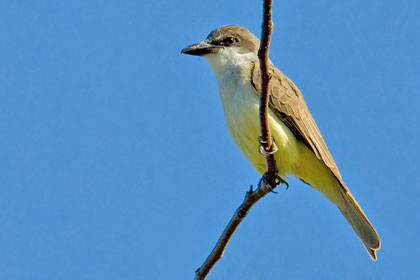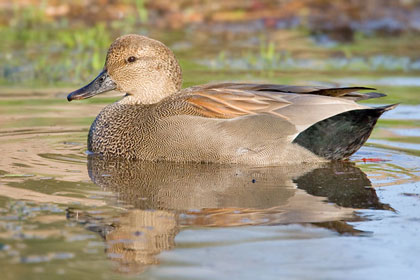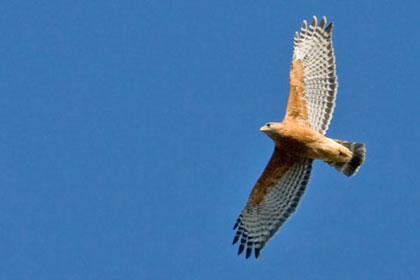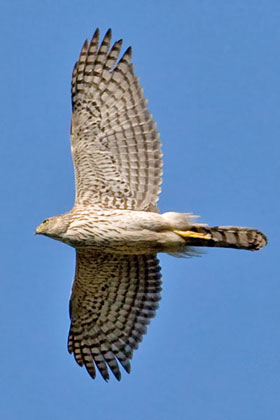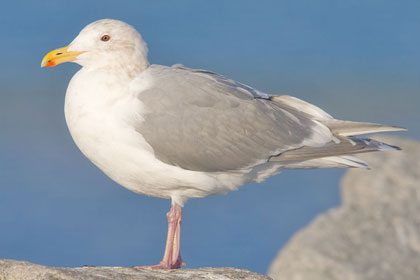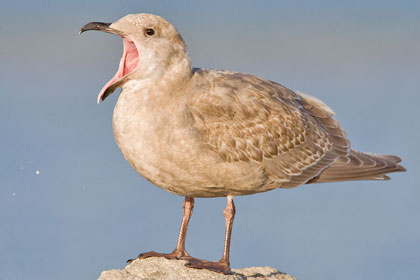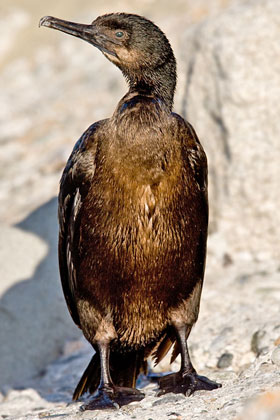I took a drive up Silverado Canyon deep into the Santa Ana Mountains early this morning. I heard recent reports of Olive-sided Flycatchers nesting around Maple Spring and thought it was a worthwhile shot to try and get photos of adults and possibly recently fledged young. It was also a chance to explore the Santa Ana Mountains (which I had not spent much time in since high school – when I used to mountain bike much more).
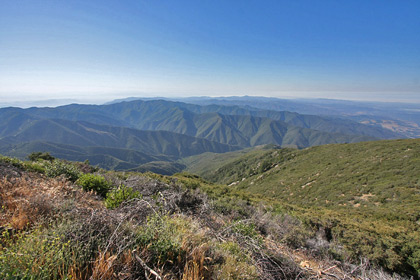
View from Santiago Peak
To give you a little info and background, the Santa Ana Mountain range extends about 35 miles from north to south and separates Orange County from the Inland Empire of Southern California. The highest point is Santiago Peak at 5,687′ above sea level.
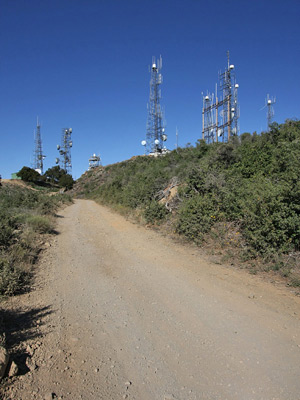
Radio Towers
At the time of the first Spanish exploration, the Santa Anas were settled by three main groups of indigenous peoples, the Tongva in the north, and the Acjachemen and Payomkowishum in the south. The mountains are also the site of a famed Indian massacre in 1831 in Black Star Canyon.
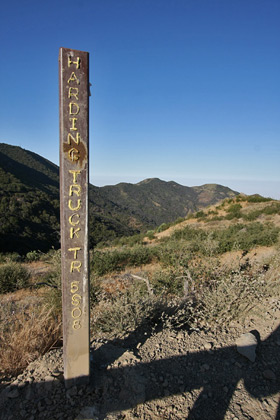
Harding Truck Trail
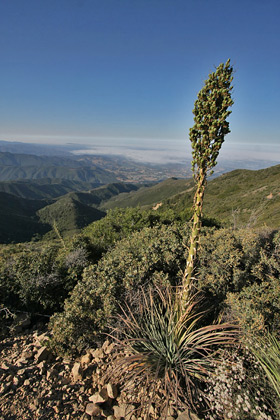
Yucca Cactus
As part of the California Floristic Province, the Santa Ana Mountains host a diverse array of plant species within distinctive natural (plant) communities, including Coastal Sage Scrub, Chaparral, Riparian Woodland, Southern Oak Woodland, Rocky Outcrop, Vernal Pool, Valley Grassland, and Montane Coniferous Forest. One of the southernmost stands of Madrones can be found in Trabuco Canyon.
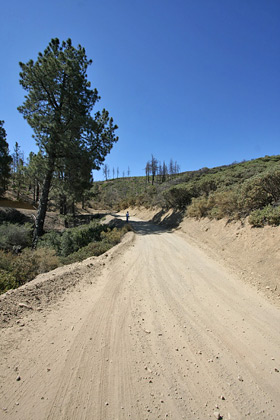
Coulter Pines
Groves of Knobcone Pine can be found around Pleasants Peak. Big-cone Douglas Fir and Coulter Pine can be found at the higher elevations. Rare flowers like the Intermediate Mariposa Lily, Heart-leaved Pitcher Sage (associated with the Tecate Cypress), and Chocolate Lily are difficult to find, but breathtaking to observe. Fragrant sages, evergreen shrubs and trees, perennial bunchgrasses, strange succulents, and fire-following flowers adorn the rugged terrain.
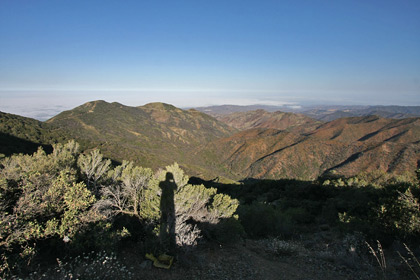
Looking Toward Orange County
A surprising variety of wildlife species can be found, including Mountain Lion, Mule Deer, Bobcat, Coyote, Gray Fox, Badger, Ringtail, Spotted Skunk, Western Gray Squirrel, Woodrat, Kangaroo Rat, Bats, Spotted Owl, Western Pond Turtle, Southern Steelhead Trout, Coast Horned Lizard, Least Bell’s Vireo, Golden Eagle, Mountain Quail, Canyon Wren, Speckled Rattlesnake, Arroyo Toad, Western Spadefoot Toad, California Treefrog, California Sister Butterfly, Tarantula, and many more.
The last wild grizzly bear in the Santa Ana Mountains was shot and killed in the mountains in 1908. Gray Wolf, Pronghorn Antelope, and California Condor also occurred
in the range at that time.
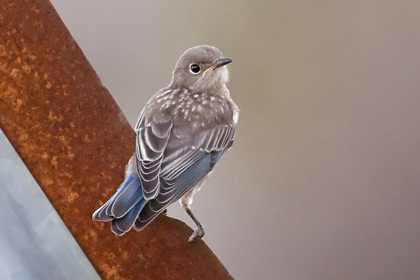
Western Bluebird (juv.)
Although I didn’t encounter much of the native species this morning I did see lots of young birds including young Black-headed Grosbeak, Western Bluebird, Black-chinned Hummingbird, Ash-throated Flycatcher and quite a few Purple Finches. Other birds encountered included Western Tanager, Bewick’s/House Wrens, Mountain Chickadee, White-breasted Nuthatch, Hairy/Acorn Woodpecker, Band-tailed Pigeon, Anna’s/Allen’s Hummingbird, Spotted/California Towhee, Wrentit, Dark-eyed Junco, Lesser Goldfinch, California Thrasher, Western Wood-Pewee and many Western Scrub-Jays.
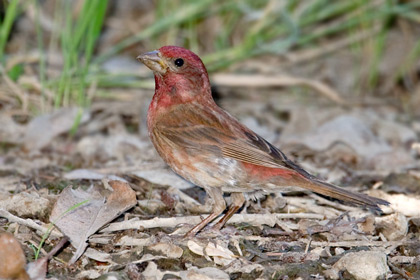
Purple Finch
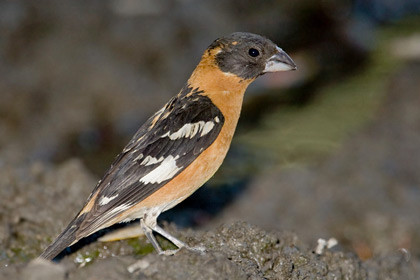
Black-headed Grosbeak
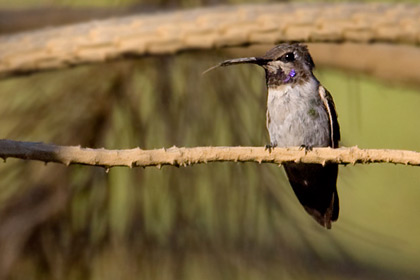
Black-chinned Hummingbird (juv.)
It was a beautiful day up in one of the LA basin’s lesser traveled ranges… I managed to create a very dusty car at the end of it all too!
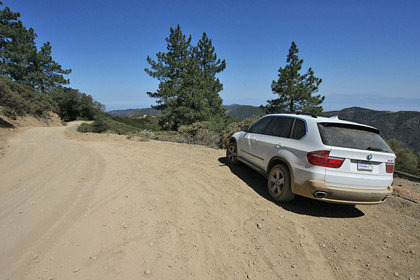
My Dirty Car
View the complete Google Earth GPS route by clicking the image below:
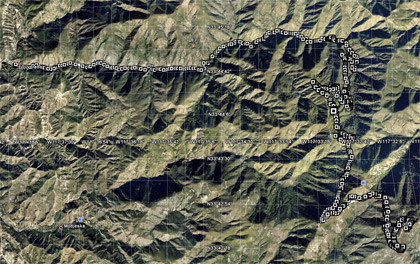
Google Earth Map
